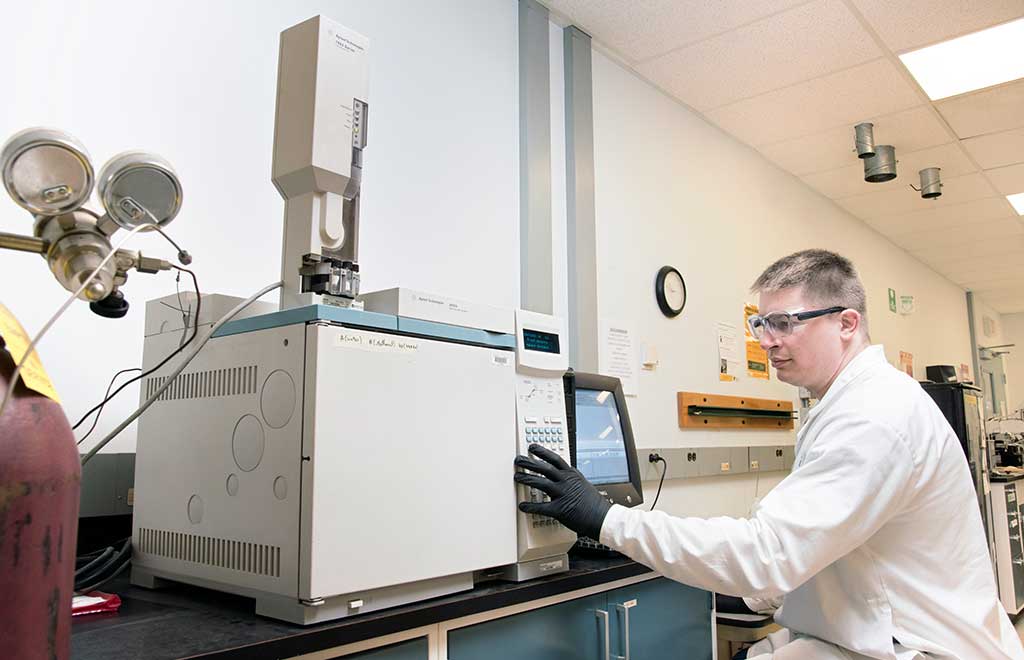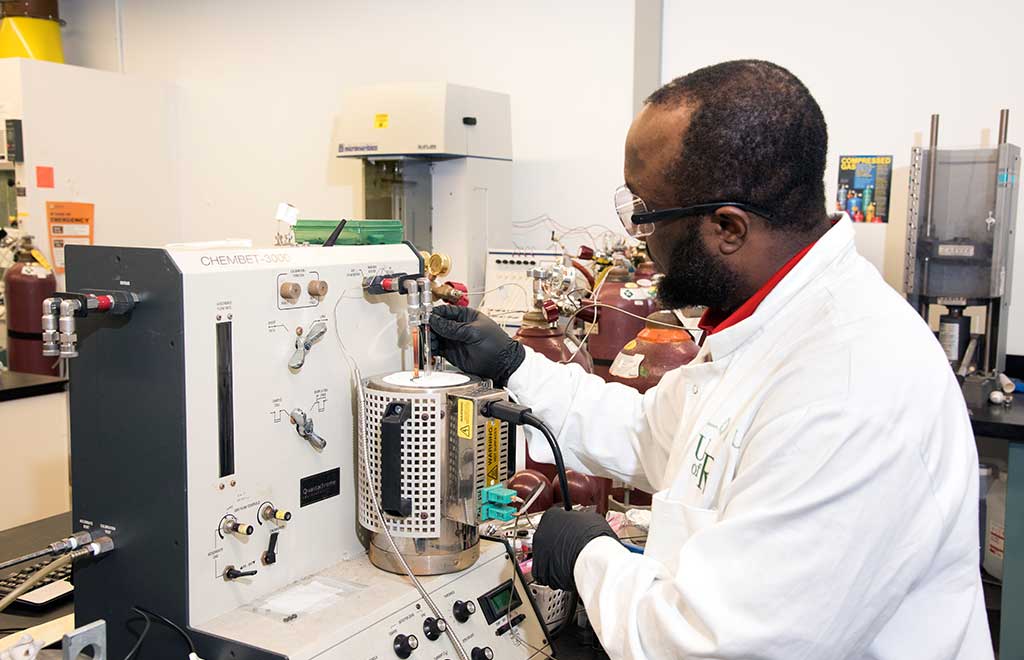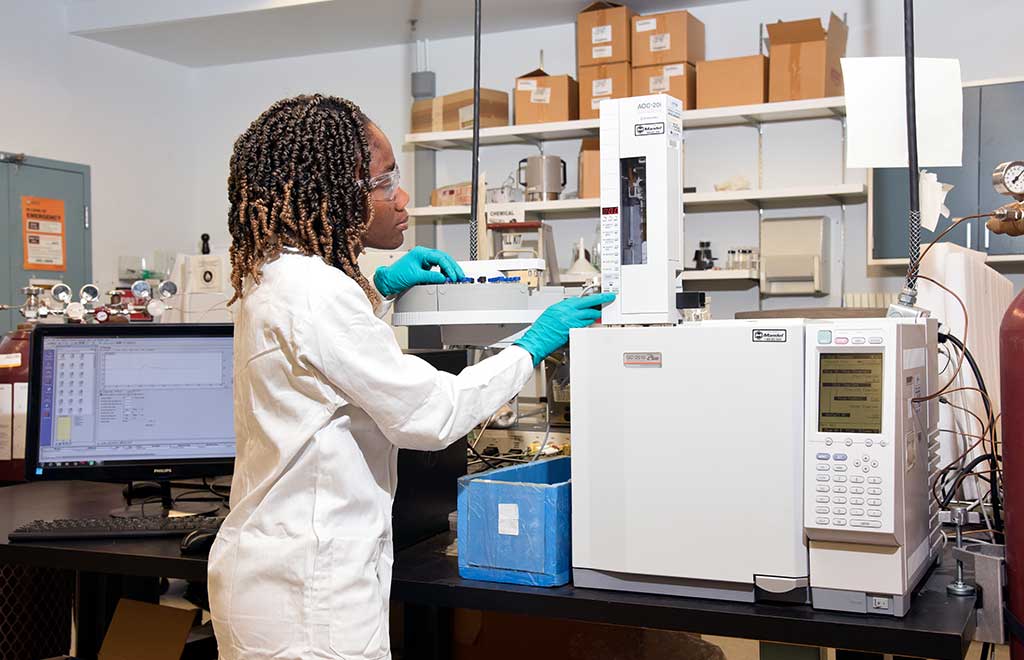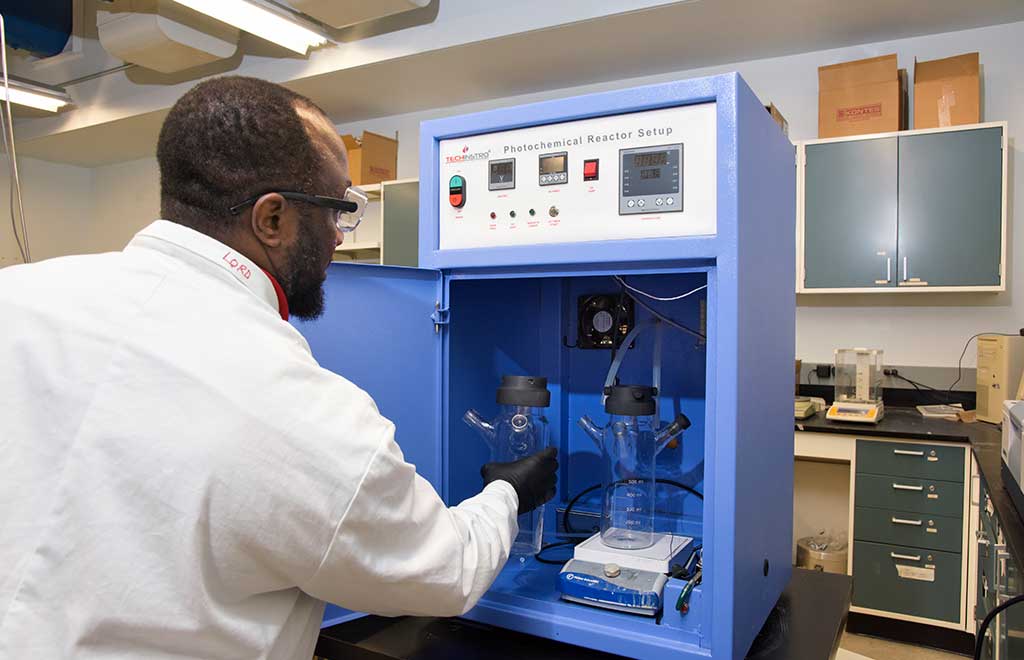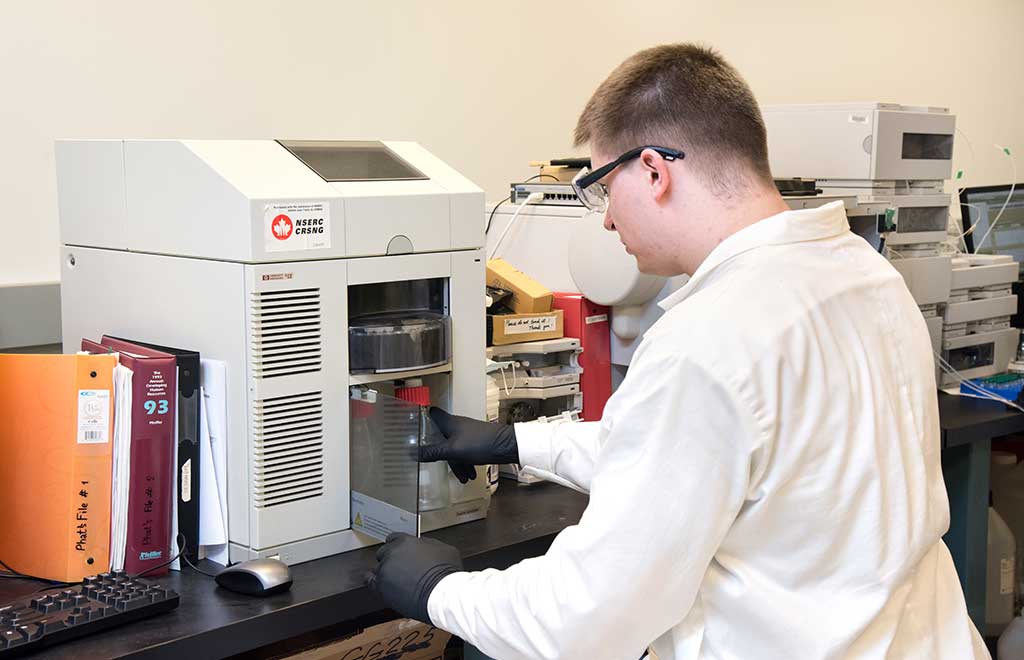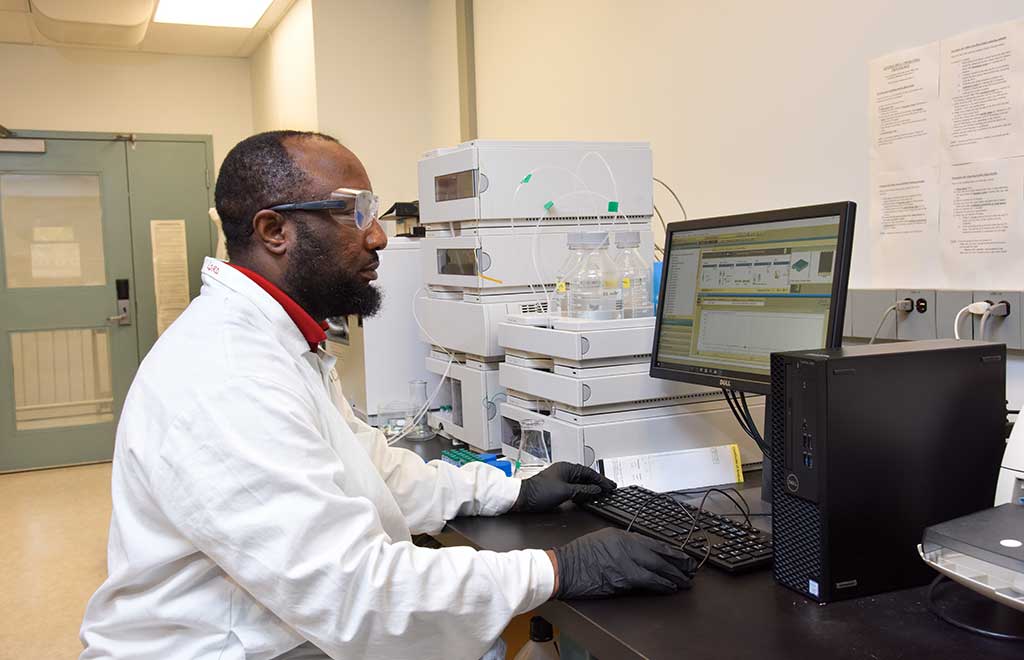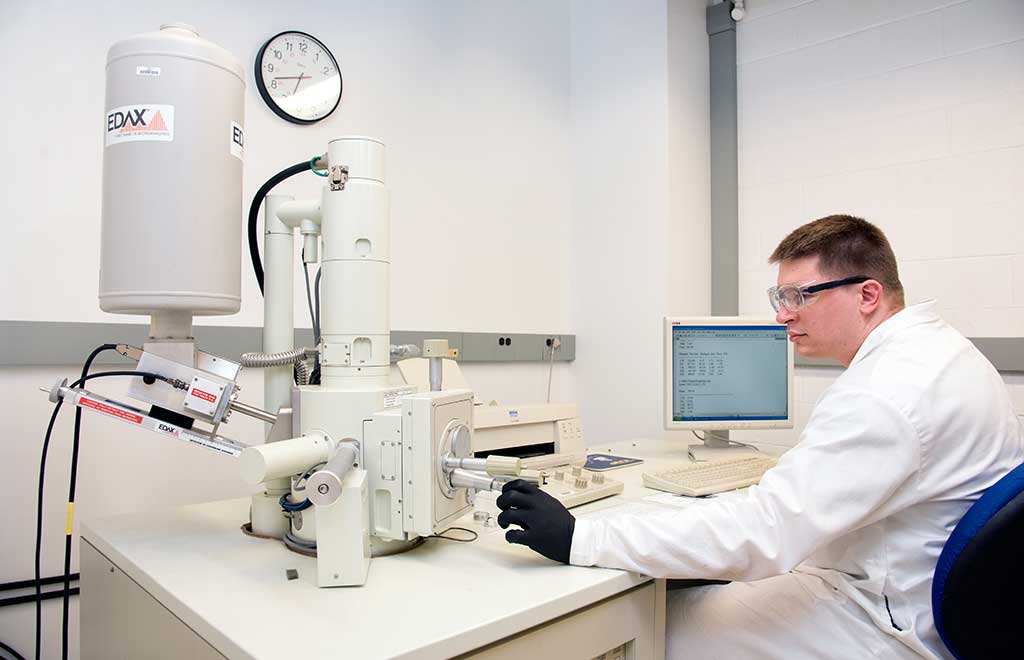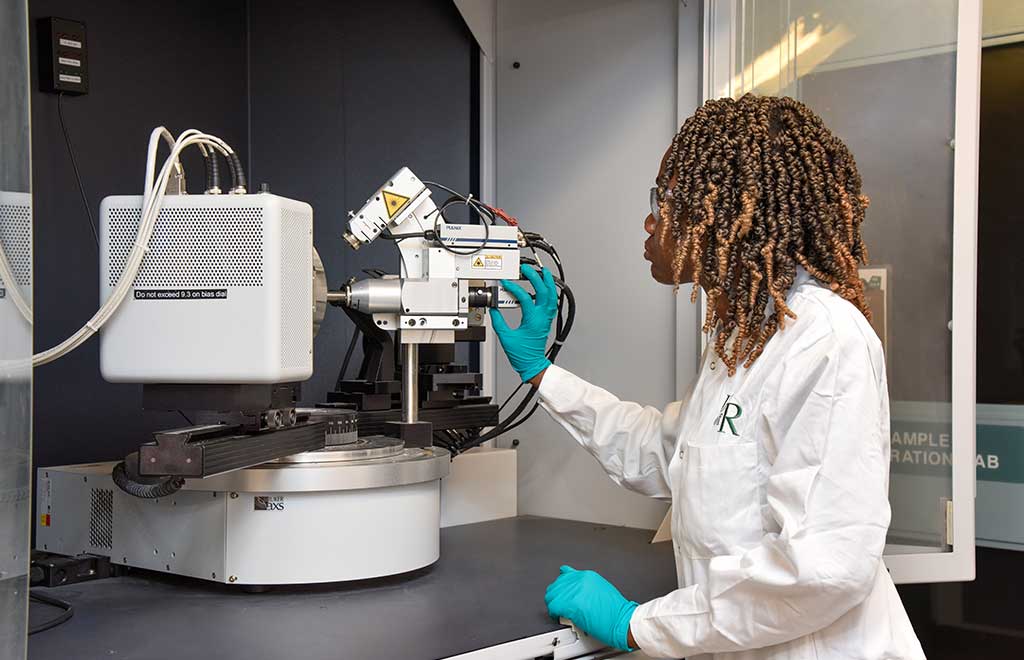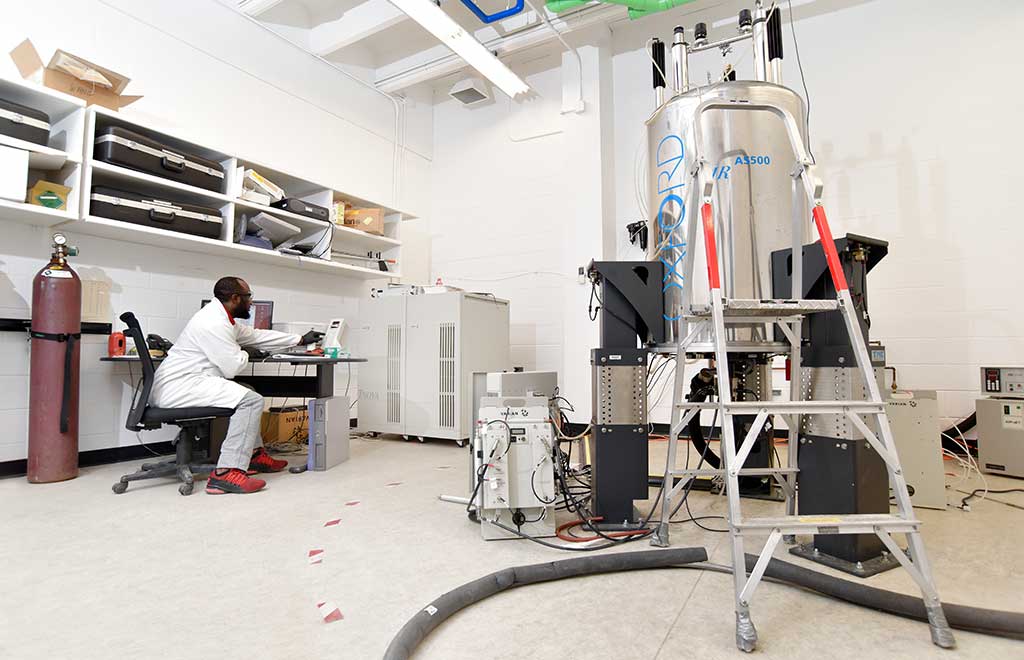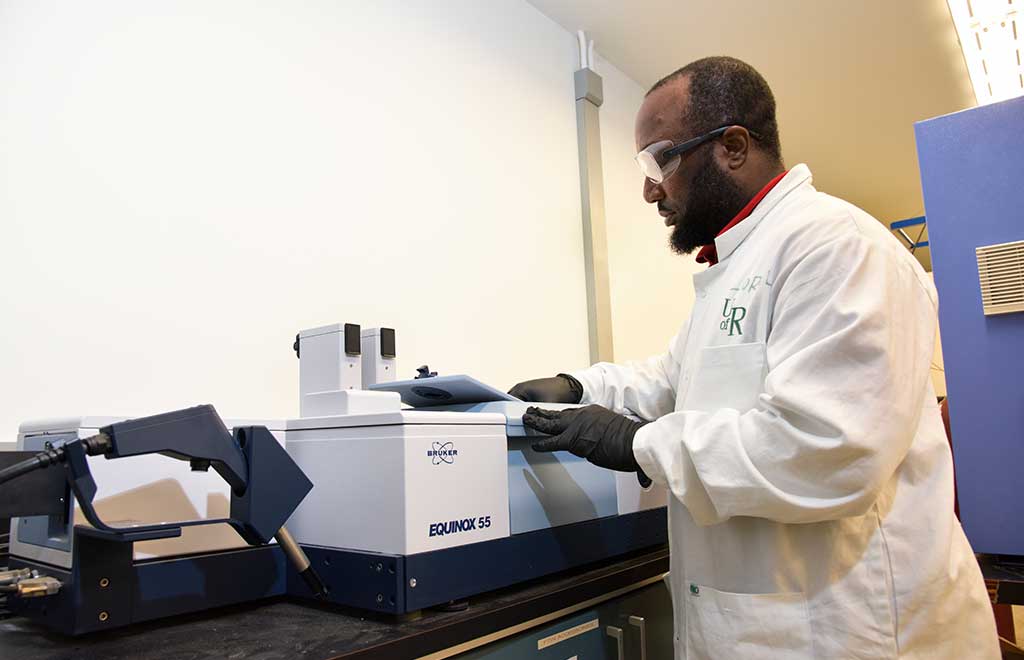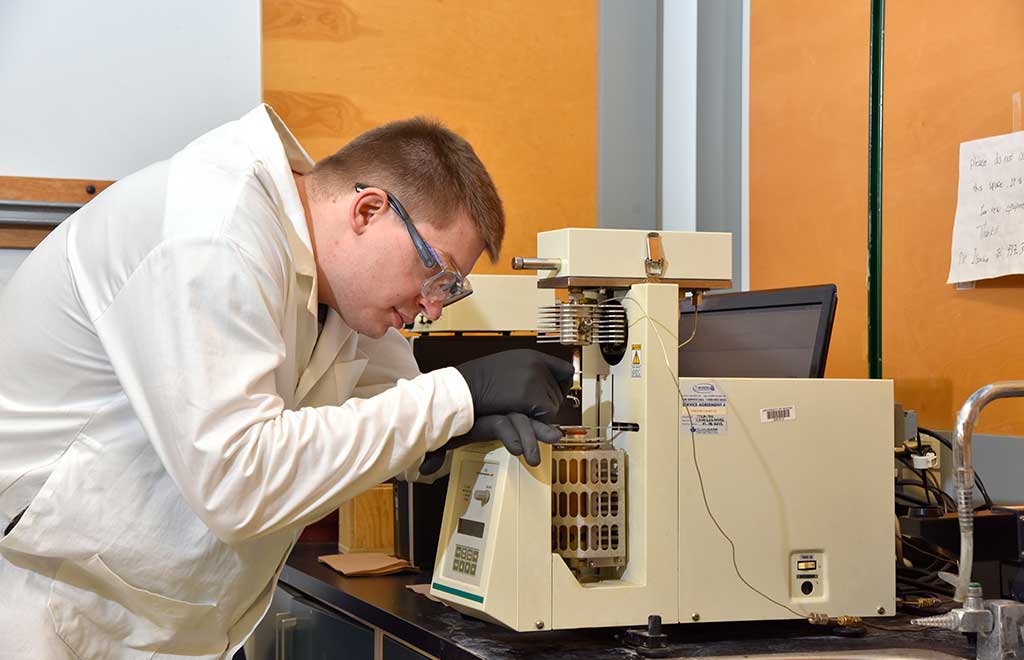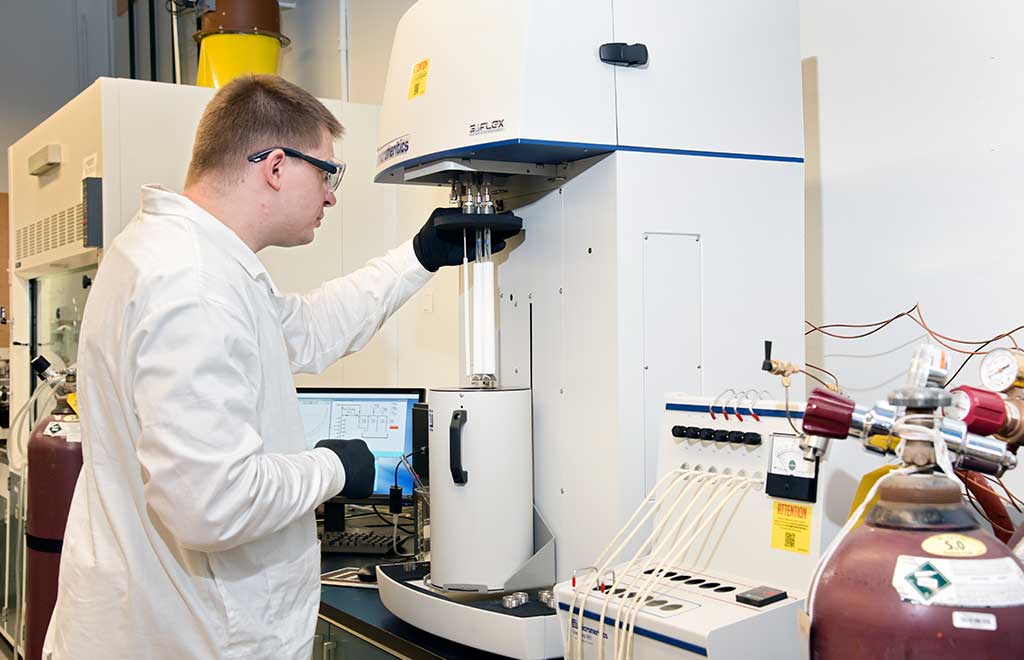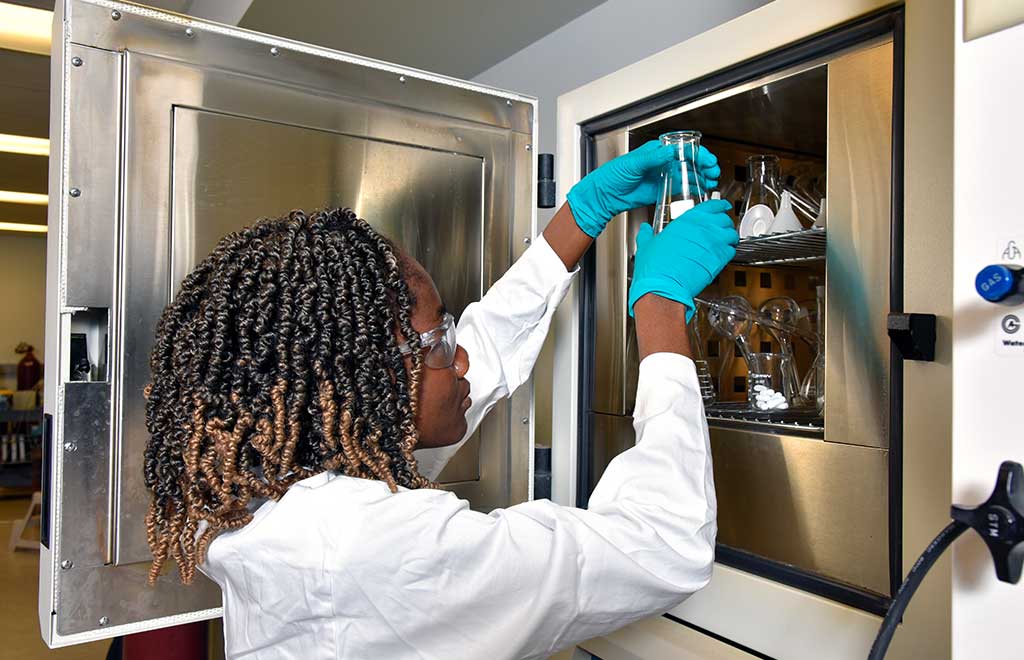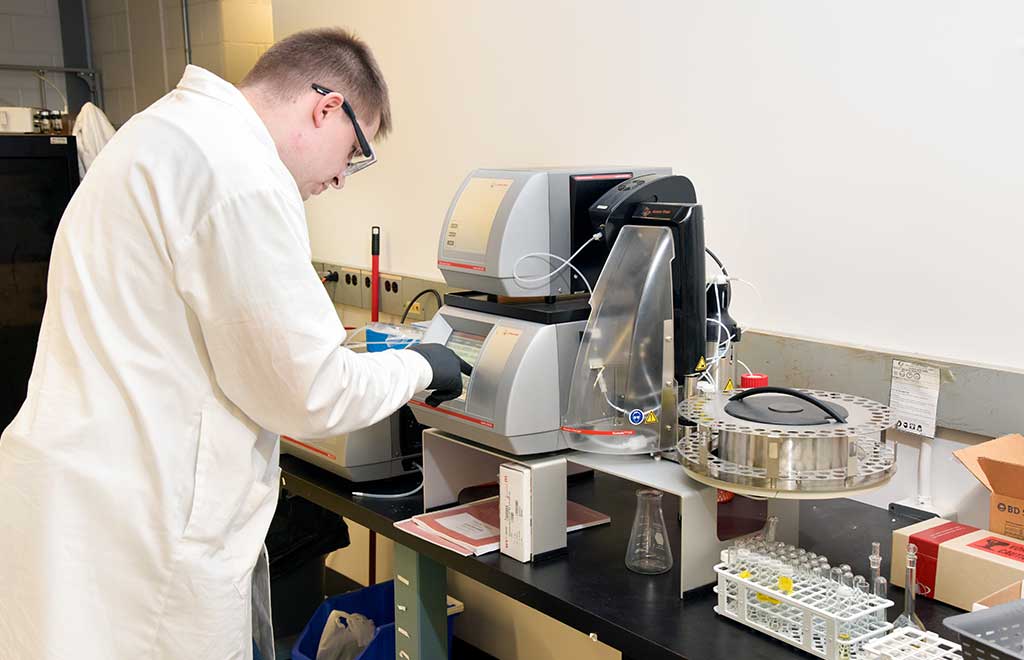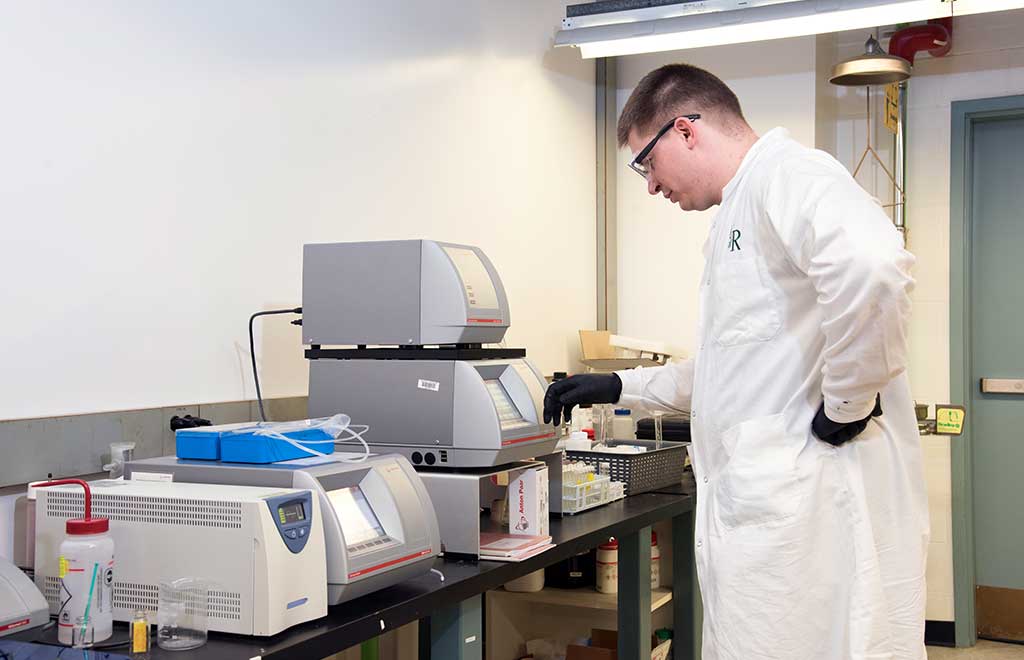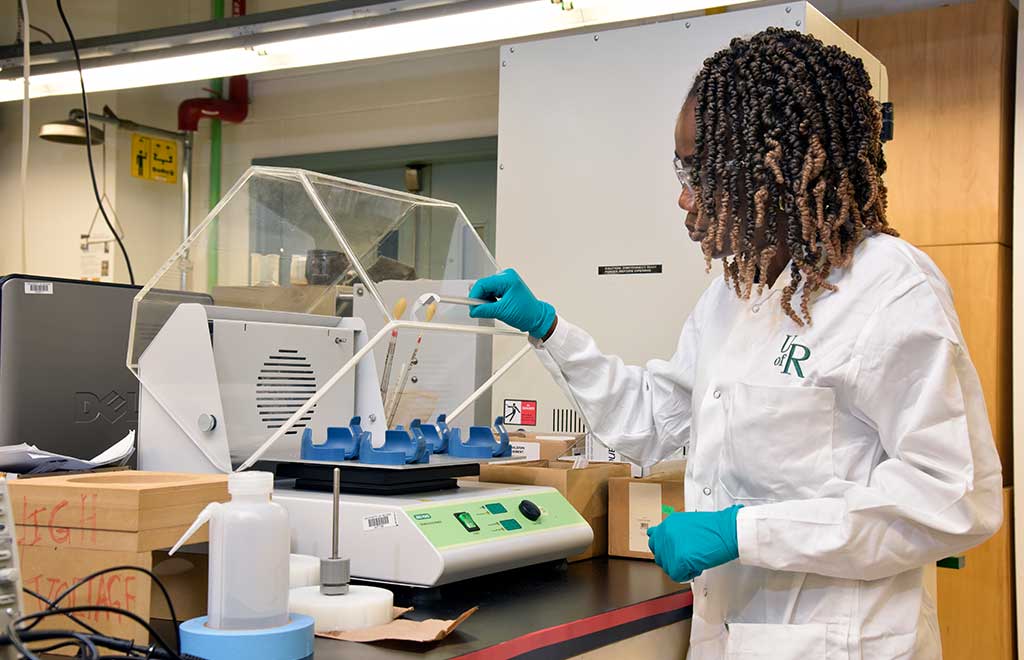Temperature Programmed Reduction, Desorption, and Oxidation (TPR/TPD/TPO)
Temperature Programmed Reduction, Desorption, and Oxidation (TPR/TPD/TPO) is used to investigate the events that take place at the surface of a solid material while its temperature is changed in a controlled manner, in order to characterize the solid material utilized in a heterogeneous catalytic reaction. At CETRI, we are capable of providing five flow methods of analysis: three temperature-programmed analyses (TPR, TPO and TPD), pulse titration, and physisorption (BET surface area) for maximum flexibility. With a specially designed high-temperature furnace, combined with software control, this equipment ensures linear heating ramps for reliable temperature programmed analysis (TPA) profiles and activation energy calculations. The unique sample cell holder permits both in-situ monitoring of sample temperature and sampling of multiple gas mixtures.

